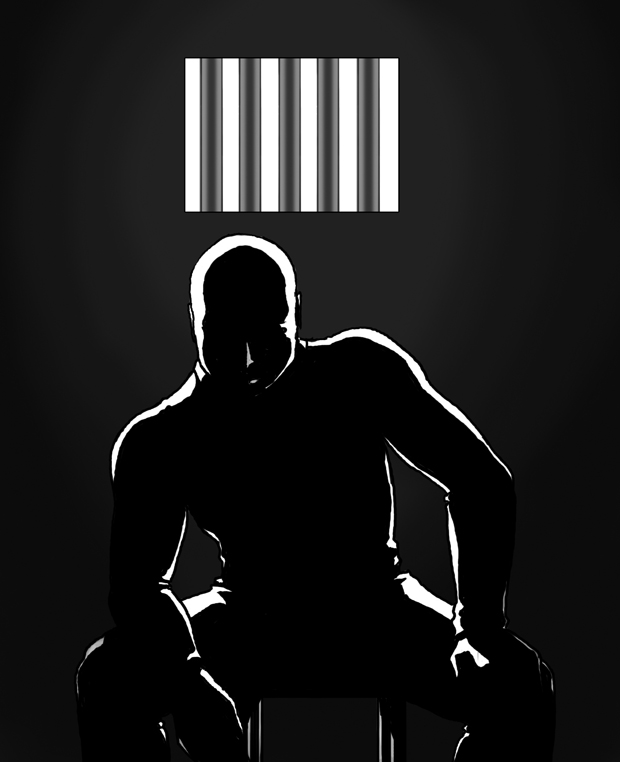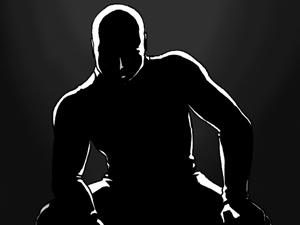
On the surface, the debate of solitary confinement is about torture, but this is only part of a bigger issue. Are some people actually deserving of this treatment, even if it is a form of torture?
The California prison hunger strike in opposition to solitary confinement recently ended on Sept. 5, but the matter is far from resolved. As with most heavily debated issues, the arguments for and against solitary confinement are not perfect.
Solitary confinement is the act of isolating prisoners in closed cells from 22 to 24 hours a day, denying them direct human contact. To clarify, even if they are allowed visits, they can only see their visitors through thick glass, and the average term for California inmates is 6.8 years, according to anti-solitary confinement advocacy organization solitarywatch.com.
To make things more complicated, the term “solitary confinement” is not always or even usually used to describe this occurrence. Often, solitary confinement is referred to as “segregation” or a state-specific denotation such as Security Housing Units (SHU) for California.
Since states can’t agree on either the name or definition of solitary confinement, there are varying statistics on the exact number of people in solitary confinement. Solitary Watch estimates close to 11,000 prisoners in solitary confinement just in California, based on reports from the California Office of the Inspector General and California Assembly’s Public Safety Committee.
With that many people affected, it is important to consider whether or not solitary confinement is torture. Juan E. Méndez, the independent United Nations special rapporteur on torture, has said in a Reuters article that the U.S. government should abolish the use of prolonged solitary confinement under all circumstances.
Méndez said that if the effects of solitary confinement on someone are severe, as they are often reported to be, it does indeed amount to torture. You will be hard pressed to find a report that doesn’t show that the vast majority of those who endure prolonged solitary confinement suffer severe consequences.
Dr. Stuart Grassian, a board-certified psychiatrist who was on the faculty of the Harvard Medical School for over 25 years, has had his conclusions and observations regarding solitary confinement cited in a number of federal court decisions.
“It is both tragic and highly disturbing that the lessons of the 19th century experience with solitary confinement are today being so completely ignored by those responsible for addressing the housing and the mental health needs in the prison setting. For, indeed, the psychiatric harm caused by solitary confinement had become exceedingly apparent well over 100 years ago,” Grassain said in a report.
Grassian goes on to explain that the U.S. is responsible for being the world leader in introducing solitary confinement as a popular punishment.
Solitary confinement was abandoned due to the catastrophic harm to the prisoners. However, in 1983 two correctional officers were murdered by inmates at a prison in Illinois and afterward the prison adopted solitary confinement. Many other prisons began to follow suit.
Detailed, haunting accounts from people who have suffered through solitary confinement are abundant online, and they closely resemble the popularized portrayals on television shows like “Law and Order: SVU” and “Orange is the New Black.”
The bottom line is that human touch and socialization aren’t just nice to have sometimes, like some sort of luxury. As the World Health Organization asserts, they are integral components in the very definition of “health.”
Not to mention, how are these prisoners supposed to return to society and adjust? The effects of solitary confinement do subside after a prisoner is released, but their capacity to reintegrate into broader society is, not surprisingly, greatly compromised, according to solitaryconfinement.org.
However, this brings about the trickier issue of those who aren’t returning to the general public, or the “worst of the worst,” like the gang members who began the recent hunger strike. Even if the majority of those in solitary confinement do not fit this definition, would these few inmates alone require the option of solitary confinement?
The whole argument against the strikers’ current demands is that the striking leaders are the heads of gangs and need to be isolated to stop or hinder their influence. Those in favor of solitary confinement, such as Gov. Jerry Brown, argue that it is completely necessary as a form of deterrence.
Even Méndez said that there are appropriate times for solitary confinement, albeit only “in very exceptional circumstances, as a last resort, for as short a time as possible and with established safeguards in place.” And this is exactly the key – solitary may be necessary, but rarely, and with these strict limitations.
Already, states like Mississippi have reduced their solitary confinement population and found that there has been a significant decrease in violence and need for violent cell extractions, according to solitarywatch.com. It seems that in the very least, states will benefit from a reduction in the number of those who are “segregated.”
Although, this still leaves open another issue, which is that of whom exactly is being “segregated.”
Even if fewer inmates are being punished by solitary confinement, they are still enduring this punishment at the discretion of prison administrators. There is no trial and jury for this huge decision.
Solitary Watch reports that approximately 50 percent of California SHU inmates are in solitary because of the gang “validation” process in which inmates thought to be active gang members are sent to SHU for six years. Others have ended up in solitary for being gay, transgender, Muslim, or raped, as a means for protection.
Most notably, juveniles are often placed into solitary for their own protection, where they are 19 times more likely to commit suicide than in the general population, according to the Campaign for Youth Justice.
There has to be an alternative for this.
Even if the inmates who recently led the prison strike deserve their solitary confinement, adjustments still need to be made, at the very least, in the way California decides who will receive this punishment.
Further, the effectiveness of solitary confinement needs to be examined in a more practical and less theoretical light. It seems that Gov. Brown and others won’t listen to inmates because some may be attempting to regain power in their gangs, but the situation is not that simple.
Even if the leaders of the hunger strike are only using the real issues surrounding solitary confinement as a platform for their agenda, those real issues still exist. The Pelican Bay SHU prisoners have five demands that are not unreasonable, one being to “provide adequate and nutritious food.”
Also, to grant their five demands does not necessarily entail success for the gangs and their leaders, except perhaps for ending long-term solitary confinement. That demand could be made conditional with long-term solitary having stricter requirements for what will land an inmate there and more frequent evaluations.
Solitary confinement should not exist as it is; a change needs to be made.






